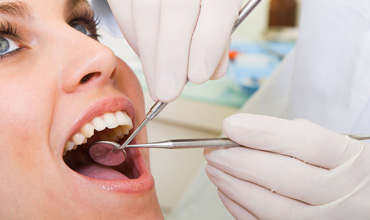Epidemiological aspect of Patient Consulting at Dental Clinic at Hlotse, Leribe, Lesotho

Abstract:
A descriptive study
has been conducted between March and August 2013 on 196 patients consulting the
oral clinic at Motebang Hospital aimed at to determine their epidemiological
patterns. The findings are as follow:
·
The dental cavity is the most
common oral disease with 40.0% and 34,8 % of which in severe clinical form;
·
the range of age between 6-10
years is consulting more than all others ranges the oral clinic with 17,7 %;
·
The dental care (brushing) is
performed once a day with 72.2% and horizontally with 64.1%. The children less
than 5 years and between 6-10 years do not perform any dental care per day in
28, 6 %( CI=28,6±3,9)
·
The intake of sugar (especially
free sugar) is highest than any with 80.8% and the patients with high intake of
sugar developed dental cavity in 81,8%;
·
The odds ratio between the
sugars’ intake and the development of the dental cavity is 2,19 (OR 2,19;
CI=44,3±6,7)
·
The frequency of jobless was
42.4%
·
The facial trauma especially
fractures and dislocations of teeth represent 22.7% and are highly more
frequent than periodontal diseases which represent 9.5%.
·
The frequency of congenital
malformations was 4.0%
References:
[1.] Armstrong D., Grace J. (2003) Research methods and
audit for general practice, Oxford University press, 3rd edition; p 27-38
[2.] As de Vos, Strydom H., Fouché C.B. and Delport C.S.L.,
(2002) Research at Grass roots.2 nd Edition.Van Schaik Publishers p 198-209
[3.] Bohn G., and Zech G. (2010) Introduction to Statistics
and Data Analysis for Physicists. Accessed on 04th july 2013; Available at :
http://www-library.desy.de/preparch/books/vstatmp_engl.pdf
[4.] Burt B.A., Albino J.E., Carlos J.P., Cohen L.K.,
Dubner R., Gershen J.A and Greene J.C (1989) : Advance in the epidemiological
study of oral-facial diseases Vol.3 No. 1, p 30-41http://deepblue.lib.umich.edu/bitstream/handle/2027.42/66664/10.1177_08959374890030010301.pdf?sequence=2
[5.] Delaney J.E, and Keels M.A (2000) Paediatric oral
pathology: Soft Tissue and Periodontal Conditions. Vol. 47
N.5http://pedclerk.uchicago.edu/sites/pedclerk.uchicago.edu/files/uploads/1-s2.0-S0031395505702601-main.pdf
[6.] Infante P.E and Russell A.L., (1973) An Epidemiologic
Study of Dental Caries in Preschool Children in the United States by Race and
Socioeconomic Level http://deepblue.lib.umich.edu/bitstream/handle/2027.42/67244/10.1177_00220345740530023501.pdf?sequence=2
[7.] Leedy P.D.J., and Ormrod, E. (2010). Practical
Research: Planning and design 9th Ed. Pearson.
[8.] Mash R., (2011) Handbook of Family medicine, Oxford
university, South Africa Press, 3rd Ed.
[9.] Moreira R.S., Magalhães C.P.A., Cruz F.O. and
Pernambuco R.,(N.D)Epidemiology of Dental Caries in the World http://cdn.intechopen.com/pdfs/29340/InTech-Epidemiology_of_dental_caries_in_the_world.pdf
[10.] Moynihan P.J. (2005) The role of diet and nutrition in
the etiology and prevention of oral diseases. Bulletin of the World Health
Organisation, p 83(9) http://www.who.int/bulletin/volumes/83/9/694.pdf
[11.] Moynihan P. and Petersen P.E., (2004) Diet, nutrition
and the prevention of dental diseases public Health Nutrition: 7(1A), 201–226
DOI: 10.1079/PHN2003589 http://www.who.int/nutrition/publications/public_health_nut7.pdf
[12.] Petersen P.E., (2013): The World Oral Health Report
2003: Continuous improvement of oral health in the 21st century - the approach
of the WHO Global Oral Health Programme https://extranet.who.int/iris/restricted/bitstream/10665/68506/1/WHO_NMH_NPH_ORH_03.2.pdf
[13.] WHO (2000), Oral Health in the African Region : A
Regional Strategy www.ajol.info/index.php/ajoh/article/download/56990/45386

